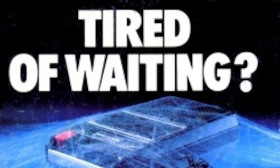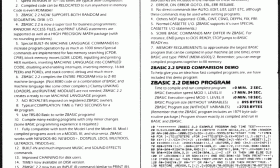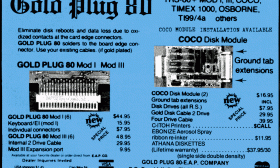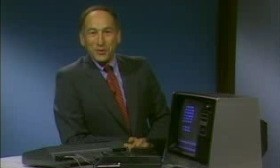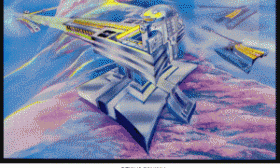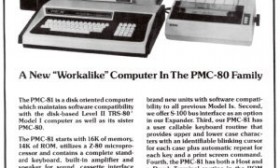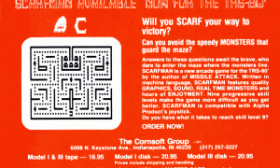There were quite a few different storage products available back in the early days of the TRS-80 Model I. In the long term, the floppy drive (and later the hard drive) completely beat out all of the competition. But back when floppy drives were considered too expensive by many, one of the most popular storage products for the TRS-80 was the Exatron Stringy Floppy.
Founded in 1974 by Robert Howell, Exatron was a supplier of automated test equipment for manufacturers and OEMs. Exatron first demonstrated the S-100 version of the Stringy Floppy at the West Coast Computer Faire in March 1978. The TRS-80 version was introduced in May 1979 at the San Francisco Computer Faire. An early price for a TRS-80 starter kit (Stringy Floppy, wafers, and software) was $299.50. The Stringy Floppy provided an additional cost savings over floppy drives because it didn’t require an Expansion Interface. By 1982, the price for a single Stringy Floppy drive had come down to $99.50.
(Read more...)
ZBASIC is probably the most popular BASIC compiler ever written for the TRS-80. It holds the distinction of being one of the few programs originally created for the TRS-80 that is still being developed in some form.
The first version of ZBASIC was written in 1979 by Andrew Gariepy for the Model I and sold by Simutek Computer Products. ZBASIC began appearing in Simutek advertisements in 1980. It originally cost $99.00 for the tape version and $129.00 for the disk version.
ZBASIC fell somewhere between a traditional compiler and an interpreter. As an early advertisement described it:
(Read more...)
Over time, many Model I computers (particularly those with Expansion Interfaces) developed the annoying habit of spontaneously rebooting. The reason was simple: the Model I card edge connectors were solder-coated tin and had a tendency to oxidize over time. Oxidation interfered with the electrical connections and tended to cause reliability problems, particularly with the critical Expansion Interface cable.
I’m sure that anyone who used a Model I still remembers that the best to way to remove the oxidation was to use a pink rubber eraser to scrub the connectors. The usual recommendation was to clean the connectors every month but many people did it every week.
(Read more...)
In February 1981, Tandy filed a lawsuit in the state of California against Personal Micro Computers concerning the PMC-80, their Model I compatible computer. Personal Micro Computers was the United States distributor of the PMC-80 but the computer was manufactured by EACA International in Hong Kong.
The case, “Tandy Corp. v. Personal Micro Computers, Inc.”, was an important precedent in computer copyright law. Along with “Apple Computer, Inc. v. Franklin Computer Corp.” in 1983, this decision helped to establish the concept that computer code was protected by copyright. Even today, it is frequently cited in computer copyright cases.
(Read more...)
The first time I ever saw a TRS-80, it was running Galaxy Invasion, written by Bill Hogue and Jeff Konyu. It might be difficult for some today to completely understand just how remarkable a program it was. Galaxy Invasion, along with Bill Hogue’s other games for Big Five Software, were incredible demonstrations of what was possible with the TRS-80. Judging from the messages I have received over the years, his games inspired many people to pursue a career in computers because they wanted to learn how to write programs the way he did.
After writing his games for the TRS-80, Bill Hogue went on to even greater fame as the author of Miner 2049er, the 1984 Electronic Game of the Year, and its sequel, Bounty Bob Strikes Back!. More recently, he created the official site of Big Five Software. I was pleased to have the opportunity in October 2008 to interview Bill Hogue.
(Read more...)
Computer Chronicles was a television show about computers which aired from 1982 to 2002 on PBS stations in the United States. Back in 1991, Computer Chronicles devoted an episode to Radio Shack computers. Tandy was still manufacturing computers at the time, and most of the show was about their current computers.
But at the start of the show, Stewart Cheifet, the long-time host of Computer Chronicles, showed off his first computer: a Model I that he bought in 1978.
(Read more...)
Devil’s Tower was written by John Olsen and released by Fantastic Software in 1982.
The player starts the game on the left, separated from the Attackers by a tall mountain in the center of the screen. The goal is to shoot over the mountain and destroy the Attackers on the other side. To complicate matters, the Attackers shoot back at you, often displaying an uncanny ability to predict where you are moving.
(Read more...)
The PMC-80 was the North American version of a TRS-80 Model I clone that was created by EACA International Limited, a Hong Kong manufacturing company. Their Model I compatible computer was sold around the world by different distributors using different names. In Australia and New Zealand, it was the System 80. In Europe, it was the Video Genie. In the United States and Canada, it was the PMC-80, distributed by Personal Micro Computers.'
(Read more...)
The name TRS-80 stood for two things:
- TRS stood for Tandy Radio Shack, the company that created the TRS-80.
- 80 was taken from the Zilog Z80, the processor used in the original TRS-80 Model I.
Tandy continued to use the TRS-80 name for their future computers, even for ones that didn’t use a Z80. For example:
(Read more...)
Scarfman was based on the arcade game Pac-Man, which was released by Namco in 1980. It was written by Philip Oliver and distributed by the Cornsoft Group. The Cornsoft Group also released a version of Scarfman for the Color Computer.
The game starts with you (the “Scarfman”) at the bottom of the screen. Like Pac-Man, the goal of Scarfman is to eat all of the dots on the screen. You earn points for every dot eaten.
(Read more...)
